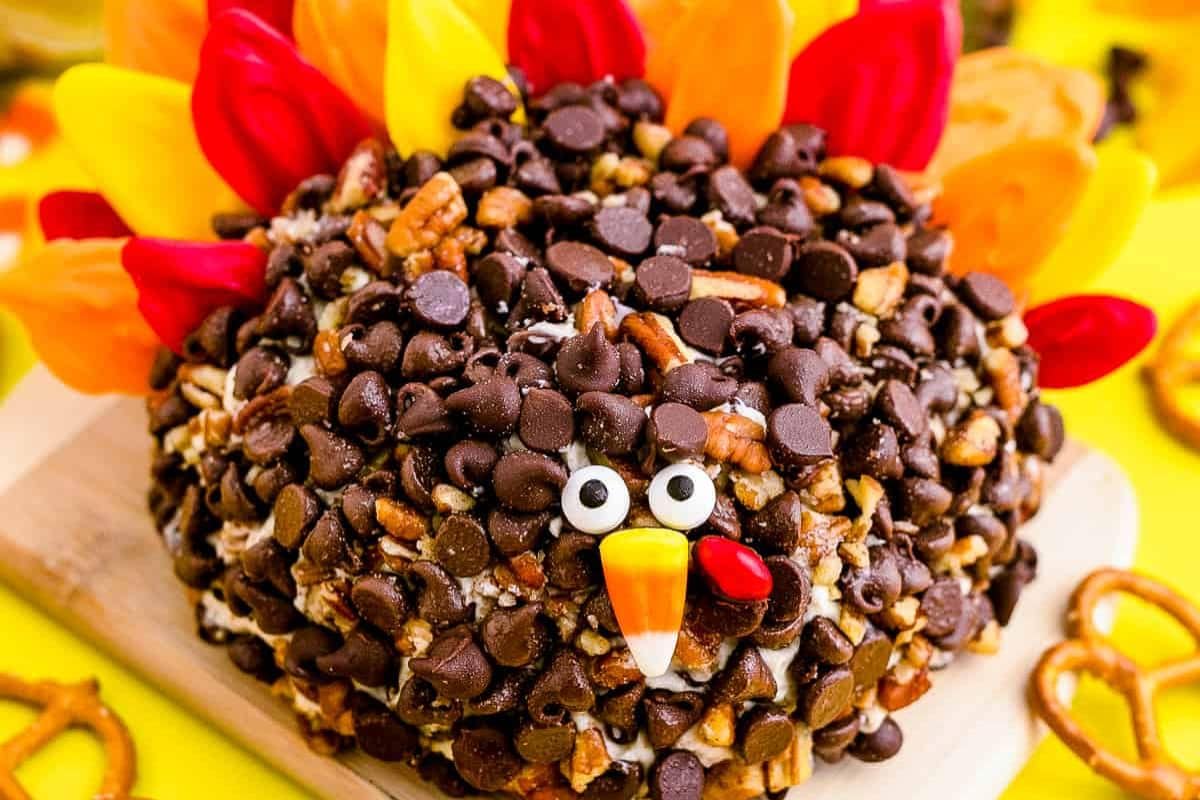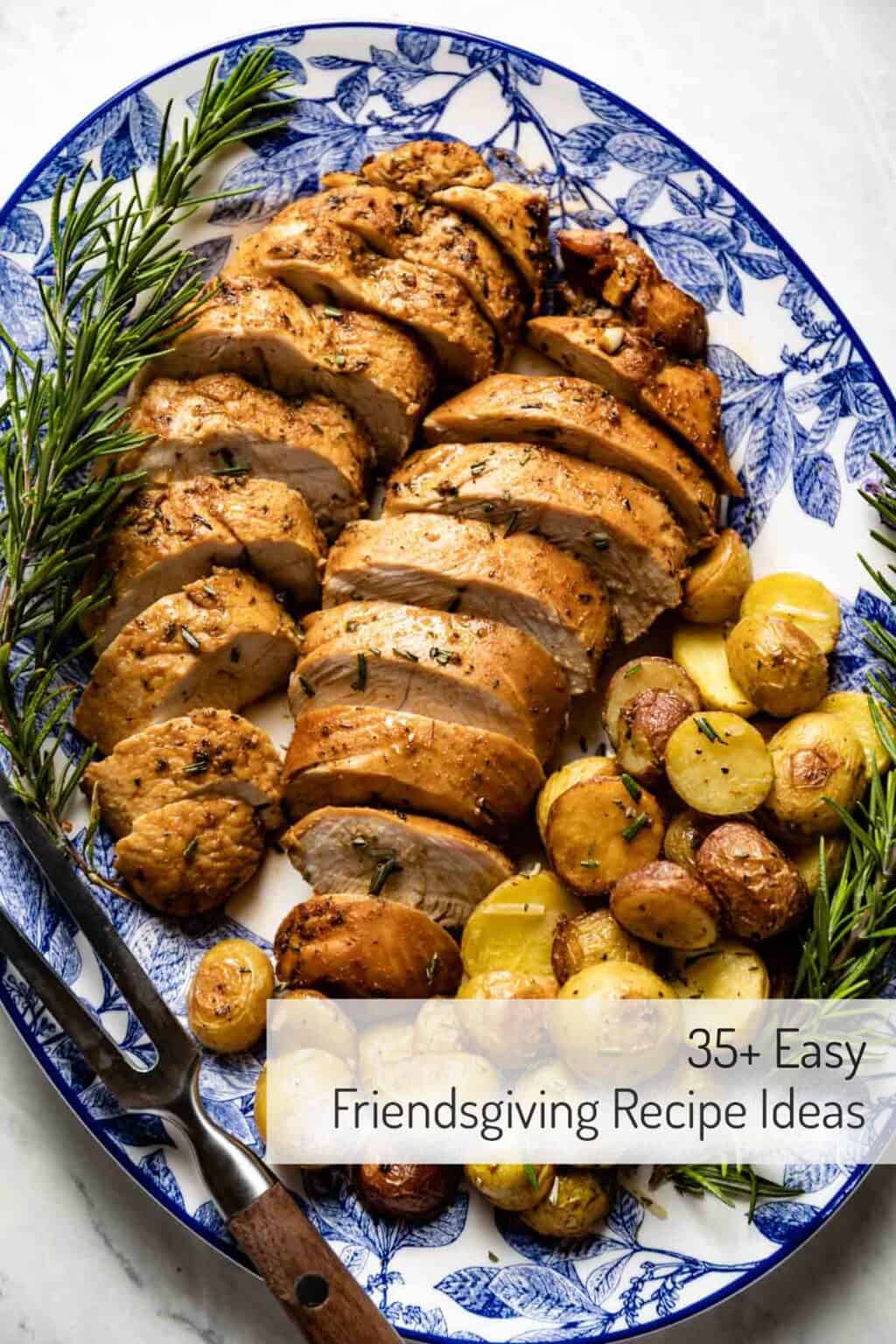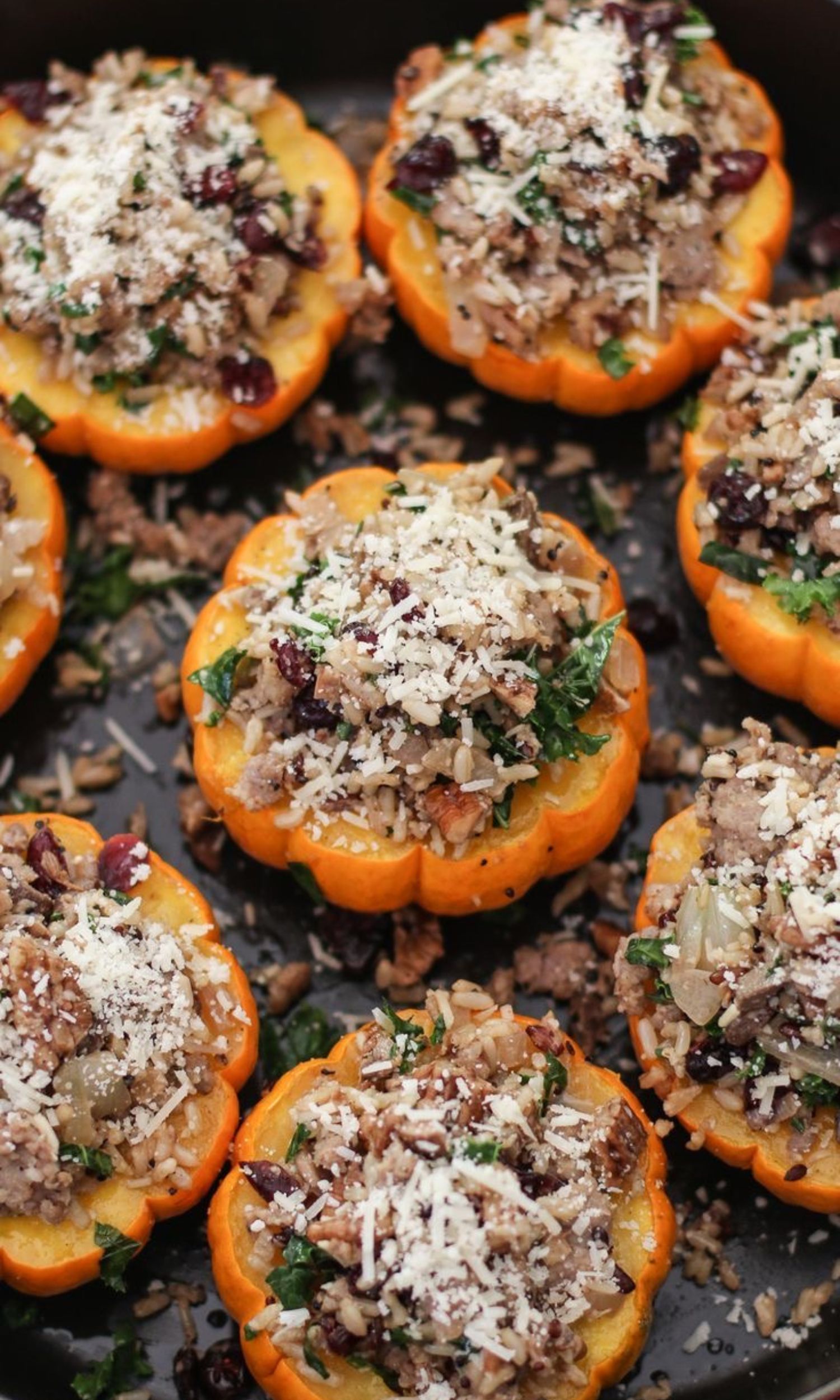Gathering your dearest pals for a special meal, a modern spin on a cherished fall tradition, has become a truly delightful event for many. This particular get-together, often called Friendsgiving, brings people together for a big feast, a chance to share good times and make lasting memories. It’s a wonderful opportunity to enjoy great food and even better company, sometimes right around the time of the main holiday, or perhaps a bit earlier or later, depending on what works best for everyone involved.
You might have received an invitation to one of these gatherings, or maybe you are thinking about hosting your own, and you're wondering what this whole Friendsgiving thing is all about, or what kinds of friendsgiving food ideas you should consider. Well, it's pretty simple, really. The word itself, Friendsgiving, is, as you might guess, a combination of "friend" and "Thanksgiving," and it points to a substantial meal enjoyed with your chosen family, your friends, either on the actual holiday or close to it. People, you know, can be pretty serious about these celebrations, putting a lot of heart into making them special, just a little like those folks you might see on television, like Malin Akerman, Kat Dennings, Jack Donnelly, and Aisha Tyler, or even fictional characters like Molly and Abbey, who along with their group of close friends and casual acquaintances, host their own memorable events.
This article will lay out everything you need to know about this wonderful fall custom, including tips for getting your friends together, creative friendsgiving food ideas, and suggestions for decorations that help set a welcoming mood. From advice on putting together the celebration, some of which professional planners might offer, to dishes that will truly please everyone at the table, we've put together a pretty comprehensive guide to help you host your very own Friendsgiving party. We will explore fun and inventive friendsgiving ideas to make this year’s get-together stand out, so you can, like, totally make it your own.
Table of Contents
- What is Friendsgiving Anyway?
- Why Do We Celebrate Friendsgiving?
- Planning Your Friendsgiving Feast
- What Are Some Classic Friendsgiving Food Ideas?
- How to Handle Dietary Needs for Friendsgiving Food Ideas?
- Creative and Fun Friendsgiving Food Ideas
- Decorating Your Friendsgiving Space
- Making Memories Beyond the Meal
What is Friendsgiving Anyway?
Friendsgiving, essentially, is a rather cool, modern take on Thanksgiving, a holiday usually spent with family, but this time, it's all about your friends. The concept, you know, has been around for a bit, with the term itself reportedly appearing in a tweet back in 2007, which is, like, pretty recent in the grand scheme of things. It’s a chance to get together with the people who might not be related by blood but are certainly family by choice. This gathering typically involves a big meal, much like a traditional Thanksgiving spread, but the vibe is often a bit more relaxed and, well, less formal, in a way. It’s a time when you can really let your hair down and just enjoy being with your favorite people, without some of the pressures that can sometimes come with family gatherings, so.
The beauty of Friendsgiving, in some respects, comes from its flexibility. Unlike the traditional holiday, which often has a set date and specific expectations, Friendsgiving can happen whenever it suits your group best. It could be the weekend before Thanksgiving, the weekend after, or even on Thanksgiving Day itself if your plans allow. This makes it, you know, much easier to coordinate schedules with busy friends, allowing everyone to participate without too much fuss. It's truly a celebration of companionship, a moment to appreciate the bonds you share with those who support you through thick and thin, and it’s basically about making your own traditions, too it's almost.
Why Do We Celebrate Friendsgiving?
Celebrating Friendsgiving is, in essence, a wonderful way to acknowledge and cherish the people who make up your everyday support system. For many, friends are a chosen family, providing comfort, laughter, and a listening ear through life's ups and downs. This gathering offers a dedicated time to express gratitude for these connections, sharing heartfelt stories and creating new, happy memories together, you know. It's a chance to step away from the usual routine and simply enjoy the company of those who understand you best, making it a pretty significant event for many groups, so.
Beyond just showing appreciation, Friendsgiving is also, frankly, a fantastic excuse to cook and eat delicious food. It’s a chance to experiment with recipes, share favorite dishes, and perhaps even try something new that you wouldn't typically prepare for a smaller meal. The collaborative nature of many Friendsgiving meals, where everyone brings a dish, means there's a huge variety of flavors and textures to sample, making the eating experience truly special. It's a feast, plain and simple, but one that comes with an extra helping of warmth and camaraderie, which is, like, really what it's all about.
Planning Your Friendsgiving Feast
Putting together a Friendsgiving feast, honestly, doesn't have to be a stressful ordeal. With a little thought and some teamwork, you can create a memorable event that everyone will enjoy. The key is to think about the different parts of the celebration, from who you'll invite to what you'll all eat, and even how the place will look. It’s about setting the stage for good times and good food, essentially, and ensuring that the experience feels relaxed and joyful for everyone involved, including the person doing the hosting, you know.
One of the first things to consider, naturally, is how many people you plan to invite. This will influence pretty much every other decision, from the amount of food you need to the size of the space you’ll use. It’s also a good idea to think about the overall mood you want to create. Do you want a very casual, potluck-style gathering where everyone contributes a dish, or a more structured meal where you handle most of the cooking? These initial choices will help guide your planning process, making the whole thing, you know, a bit smoother and more manageable, so.
Setting the Date and Guest List for Friendsgiving Food Ideas
Choosing the right date is, actually, pretty important for a Friendsgiving gathering. Since it’s a flexible holiday, you have the freedom to pick a time that works best for the majority of your group. Weekends surrounding the actual Thanksgiving holiday are often popular choices, giving people a chance to celebrate with friends before or after their family commitments. Sending out invitations with a clear date and time well in advance is a good idea, allowing everyone to mark their calendars and plan accordingly, which, you know, helps a lot with attendance, so.
When it comes to the guest list, think about who you want to share this special meal with. It could be a close-knit group of lifelong friends, or perhaps a mix of different friend circles, bringing new people together. Consider the dynamics of the group and how everyone will interact. A diverse mix of personalities can often lead to interesting conversations and a lively atmosphere. You might also want to ask about any dietary preferences or restrictions when you send out invitations, which will be super helpful later when you’re figuring out your friendsgiving food ideas, as a matter of fact.
Creating the Right Atmosphere with Friendsgiving Food Ideas
The atmosphere of your Friendsgiving party, truly, plays a big part in how enjoyable the event feels. It’s not just about the food; it’s about the overall feeling of warmth, comfort, and togetherness. Think about setting the mood with lighting – maybe some softer lamps or even candles – to create a cozy glow. Background music, perhaps some mellow tunes that everyone can appreciate, can also add to the relaxed vibe. The goal is to make your home feel like a welcoming haven where everyone can unwind and simply be themselves, you know, which is pretty essential for a good time.
The way you arrange your space, too, can influence the atmosphere. If you're hosting a potluck, having a clear area for everyone to place their dishes helps keep things organized. Ensuring there's enough seating for everyone, whether at a dining table or spread out with comfortable cushions and blankets, makes a big difference. And, of course, the friendsgiving food ideas themselves contribute to the atmosphere. Dishes that are meant for sharing, like large platters or bowls that people can pass around, encourage interaction and a sense of communal eating, which, honestly, is what Friendsgiving is largely about, so.
What Are Some Classic Friendsgiving Food Ideas?
When thinking about friendsgiving food ideas, many people naturally lean towards the traditional flavors of Thanksgiving, but with a twist. The beauty of Friendsgiving is that you can keep the beloved elements of the holiday meal while also introducing new, exciting dishes that reflect your group's tastes. It's a chance to honor the classics but also to experiment and make the meal uniquely yours. You might find yourself combining tried-and-true recipes with some fresh, inventive additions, which is, like, pretty fun, so.
The core idea, typically, is to have a generous spread that satisfies everyone's appetite and brings a feeling of abundance. This often means a main dish that serves a crowd, a variety of comforting side dishes, and, of course, something sweet to finish things off. The potluck model works incredibly well for Friendsgiving, as it distributes the cooking effort among everyone, making it less of a burden on the host and allowing for a truly diverse collection of culinary contributions. It’s really about sharing the joy of cooking and eating together, you know.
The Main Event - Friendsgiving Food Ideas
For the centerpiece of your Friendsgiving meal, a turkey is, you know, often the go-to choice, just like traditional Thanksgiving. A roasted turkey, perhaps brined for extra juiciness, can be a grand statement piece that everyone looks forward to. However, you don't have to feel tied to tradition. For a smaller gathering, a roasted chicken or even a large ham could be a wonderful alternative. Some groups, frankly, might even opt for something completely different, like a slow-cooked pork shoulder or a hearty beef roast, which can be just as impressive and perhaps a little easier to prepare, so.
If you're looking for friendsgiving food ideas that cater to different preferences, considering multiple main dishes could be a good move. For instance, alongside a traditional meat, offering a substantial vegetarian option ensures everyone has a satisfying plate. A rich mushroom Wellington or a flavorful lentil loaf can serve as a fantastic main course for those who prefer plant-based eating. The main goal, basically, is to have a dish that feels special and celebratory, something that brings everyone together around the table, you know, and makes the meal feel complete.
Sides That Shine - Friendsgiving Food Ideas
Side dishes are, honestly, where Friendsgiving meals truly sparkle, offering a chance for endless variety and personal touches. Classic options like creamy mashed potatoes, perhaps with a hint of garlic or herbs, are almost always a hit. Sweet potato casserole, with its delightful topping of pecans or marshmallows, brings a touch of sweetness to the savory spread. And, of course, a good stuffing or dressing, whether it's bread-based with savory sausages or a more rustic cornbread version, is a must-have for many, you know, as it just feels right for the season.
Beyond the well-known favorites, there are so many creative friendsgiving food ideas for sides that can add flair to your table. Consider roasted Brussels sprouts with balsamic glaze and crispy bacon bits, or green beans tossed with toasted almonds. A vibrant cranberry sauce, homemade with fresh berries and a touch of orange zest, offers a bright contrast to the richer dishes. Don't forget about a fresh salad, too, maybe one with seasonal greens, apples, and a light vinaigrette, to add a refreshing element to the meal. The more variety, in a way, the more enjoyable the feast becomes for everyone, so.
Sweet Endings - Friendsgiving Food Ideas
No Friendsgiving feast is complete, naturally, without a selection of delightful desserts. This is another area where friendsgiving food ideas can truly shine, allowing for both traditional comforts and exciting new tastes. Pumpkin pie, with its warm spices and comforting texture, is a classic choice that many people look forward to. Apple pie, whether it’s a simple crumb-top or a fancy lattice crust, also brings a familiar sweetness to the table, and it’s, like, pretty hard to go wrong with either of those, you know.
To add more variety, consider other seasonal treats. Pecan pie, with its rich, nutty filling, is a favorite for many. For something a little different, a pear and cranberry crisp or a spiced carrot cake can be wonderful additions. Small individual desserts, like mini cheesecakes or festive cookies, can also be a fun way to offer a range of sweet options without committing to a full pie for each flavor. And, you know, don't forget about the whipped cream or a scoop of vanilla ice cream to go alongside those warm pies and crisps; they just complete the experience, honestly.
How to Handle Dietary Needs for Friendsgiving Food Ideas?
Addressing dietary needs and preferences is, honestly, a thoughtful gesture that ensures everyone at your Friendsgiving feels welcome and can enjoy the meal without worry. It’s a good idea to ask your guests about any allergies or dietary restrictions when you send out the invitations. This simple step gives you a clear picture of what you need to consider as you plan your friendsgiving food ideas. You might find out someone is vegetarian, vegan, gluten-free, or has a specific food allergy, which is, like, pretty common these days, so.
Once you know what you're working with, you can plan accordingly. For example, if you have vegetarian guests, make sure there’s a substantial main dish that doesn’t contain meat, not just a collection of vegetable sides. For those avoiding gluten, clearly label dishes that are safe for them, or prepare a few options that are naturally gluten-free, like roasted vegetables or plain mashed potatoes. When it’s a potluck, you can ask specific guests to bring a dish that caters to a particular dietary need, making it a collaborative effort to ensure everyone has plenty to eat, which, you know, is really the spirit of Friendsgiving, anyway.
Creative and Fun Friendsgiving Food Ideas
Beyond the traditional fare, Friendsgiving is, frankly, a perfect chance to get creative with your friendsgiving food ideas and inject some fun into the meal. Think about dishes that are interactive or have a playful element. For instance, instead of a whole roasted turkey, you could make turkey sliders with various toppings, allowing guests to build their own mini sandwiches. Or, consider a mashed potato bar where people can add their favorite mix-ins like cheese, chives, bacon bits, or sour cream, which is, like, pretty popular, so.
Another fun idea is to have a theme for some of your dishes. Maybe a "fall harvest" theme where all the dishes highlight seasonal produce in unexpected ways, or a "comfort food around the world" theme where each friend brings a dish inspired by a different cuisine. Dessert, too, can be a place for creativity. A "decorate your own cupcake" station or a build-your-own ice cream sundae bar can be a delightful and engaging way to end the meal, especially if you have a mix of ages. The goal, you know, is to make the food not just delicious but also a part of the overall experience and entertainment.
Decorating Your Friendsgiving Space
Setting the scene for your Friendsgiving celebration, honestly, doesn't require a huge budget or a lot of fuss. The key is to create a warm and inviting atmosphere that feels cozy and celebratory. Think about using elements from nature, which are, like, pretty easy to find this time of year. Autumn leaves, small gourds, pumpkins, and pinecones can be arranged as simple, elegant centerpieces on your dining table or scattered around the room. These natural touches bring the beauty of the season indoors, you know, without much effort, so.
Lighting plays a big part in setting the mood. Dimming overhead lights and using lamps or string lights can create a soft, welcoming glow. Candles, perhaps unscented ones to avoid competing with the aromas of the food, can add a lovely flicker and warmth. A cozy blanket draped over a chair or a few extra pillows on the sofa can make your space feel more comfortable and encourage lingering conversations after the meal. The idea, basically, is to make your home feel like a comforting retreat where friends can truly relax and enjoy each other’s company, as a matter of fact.
Making Memories Beyond the Meal
While the delicious friendsgiving food ideas are certainly a highlight, Friendsgiving is, in essence, about much more than just eating. It's about sharing laughter, catching up on life's happenings, and creating new stories together. Think about ways to encourage interaction and connection throughout the evening. Having some board games or card games available for after the meal can be a fun way to keep the good times rolling. A photo booth with some silly props can also provide a lighthearted activity and create some lasting visual reminders of the day, you know, which is pretty cool.
Sometimes, simply providing a comfortable space for conversation is all you need. Encourage everyone to share a favorite memory from the past year or something they are grateful for. This can lead to heartfelt moments and deepen the bonds within your group. Playing some background music that everyone enjoys, but isn't too loud, allows for easy conversation. The most important thing, basically, is to foster an environment where everyone feels comfortable, valued, and genuinely happy to be together, making the memories themselves the true feast of the day, so.



